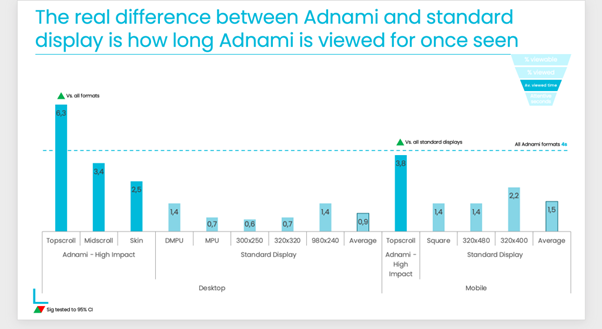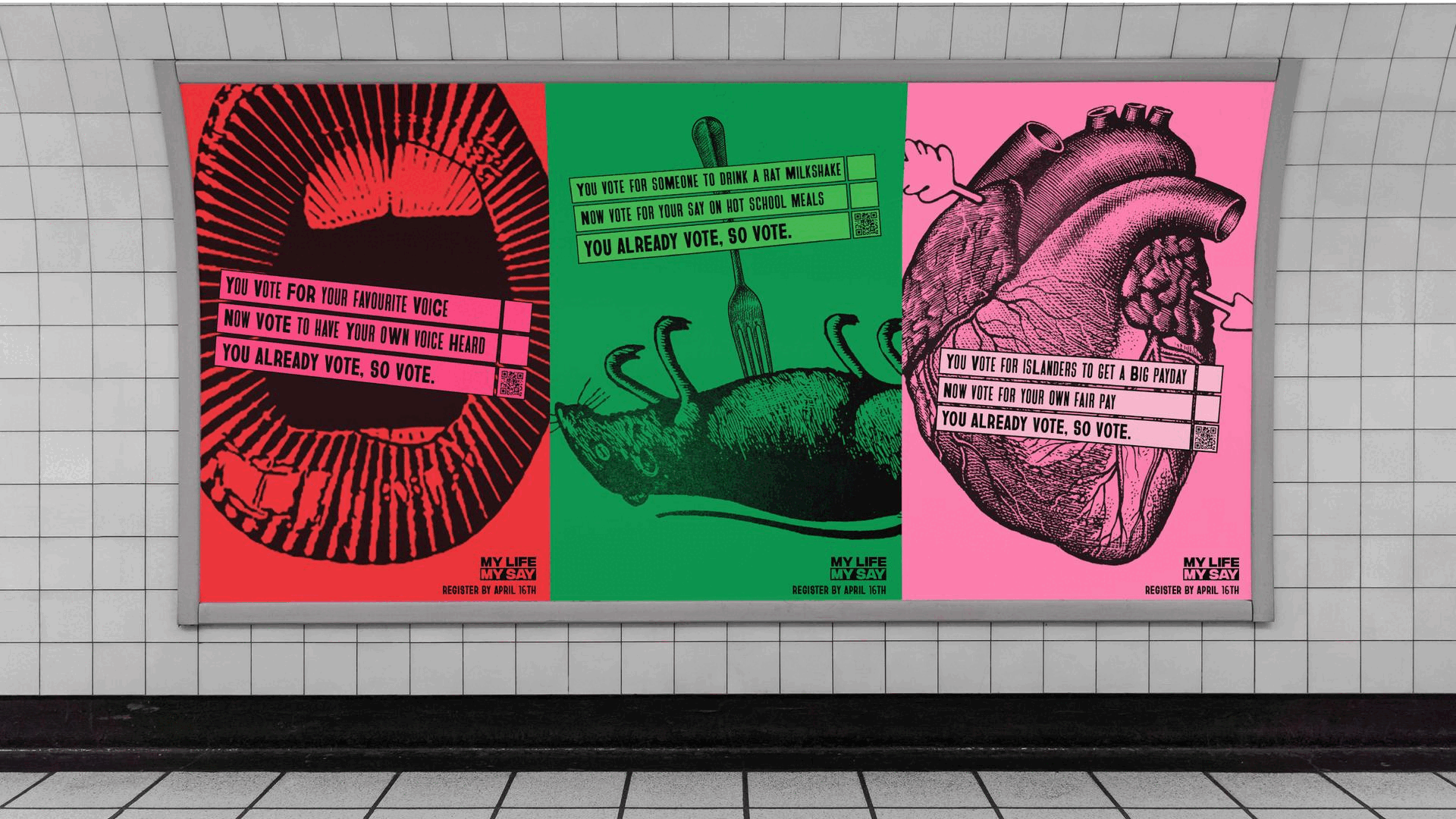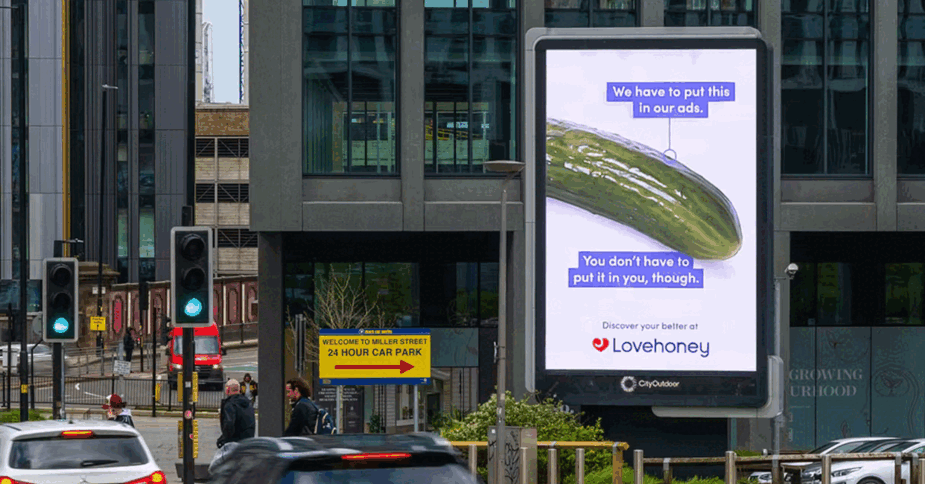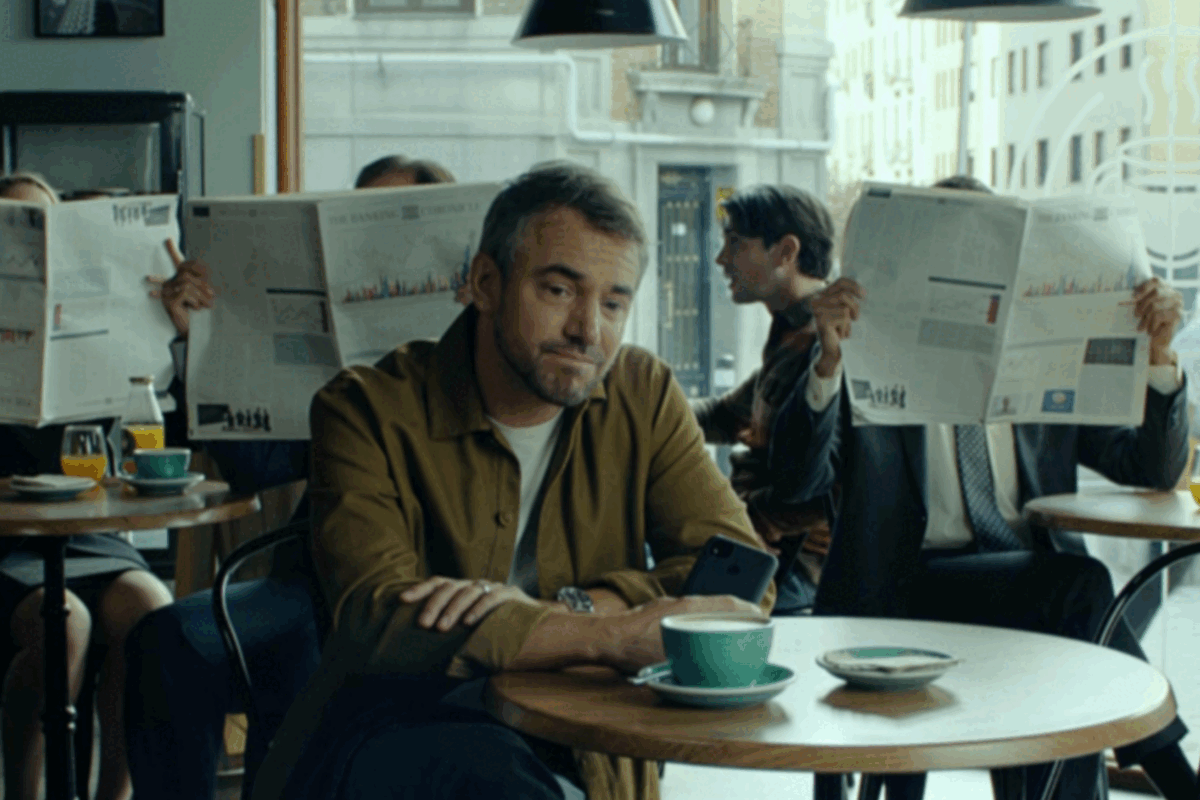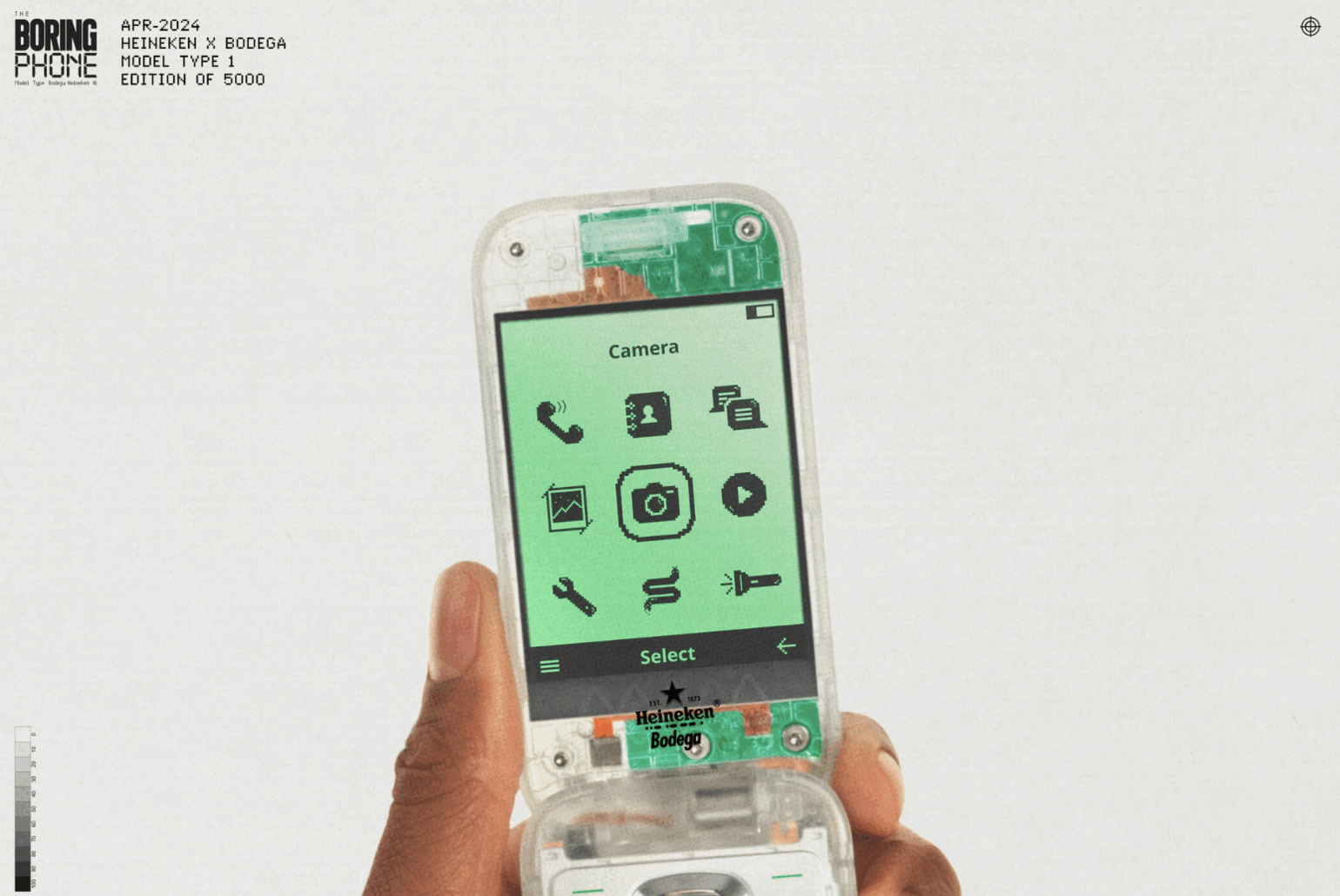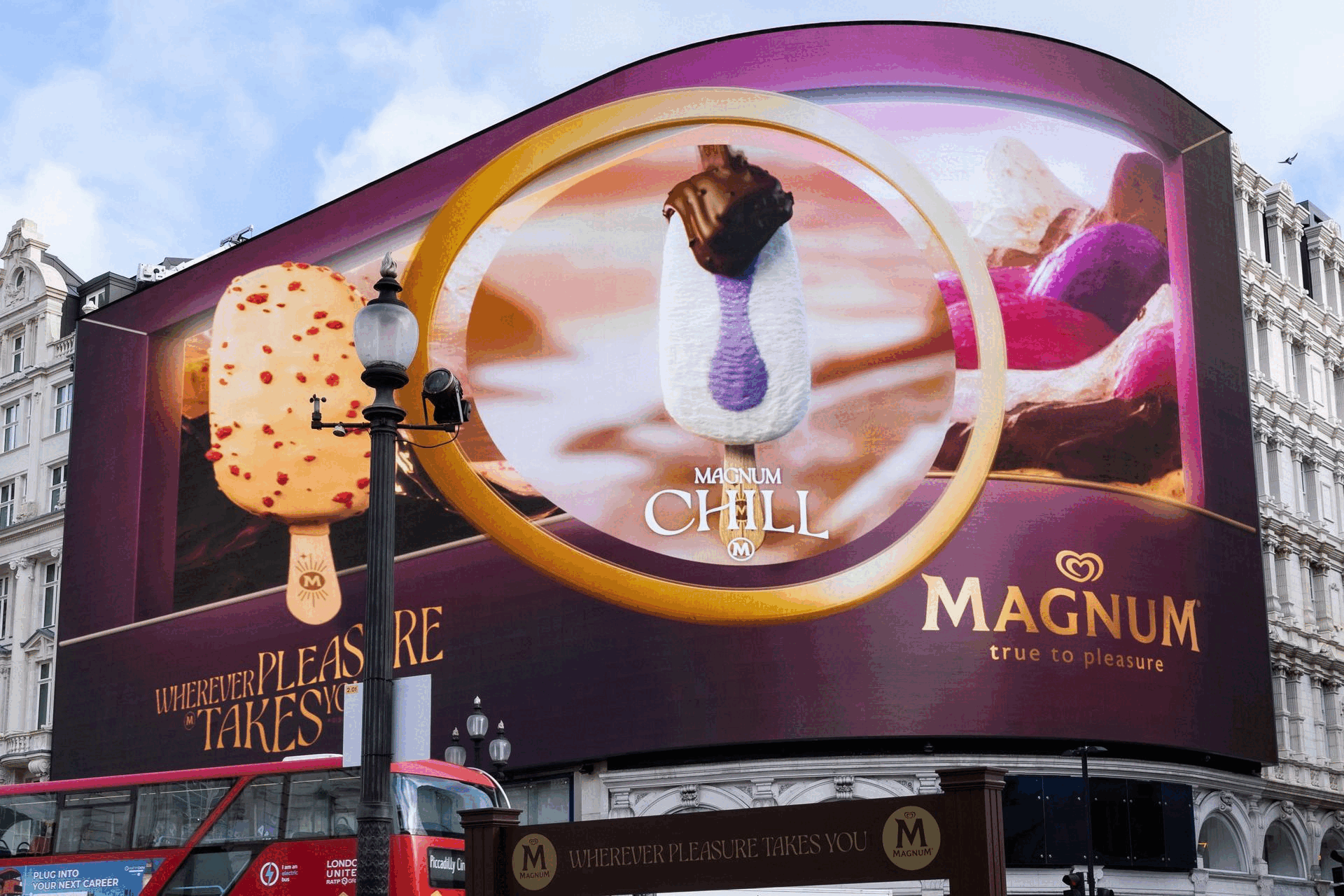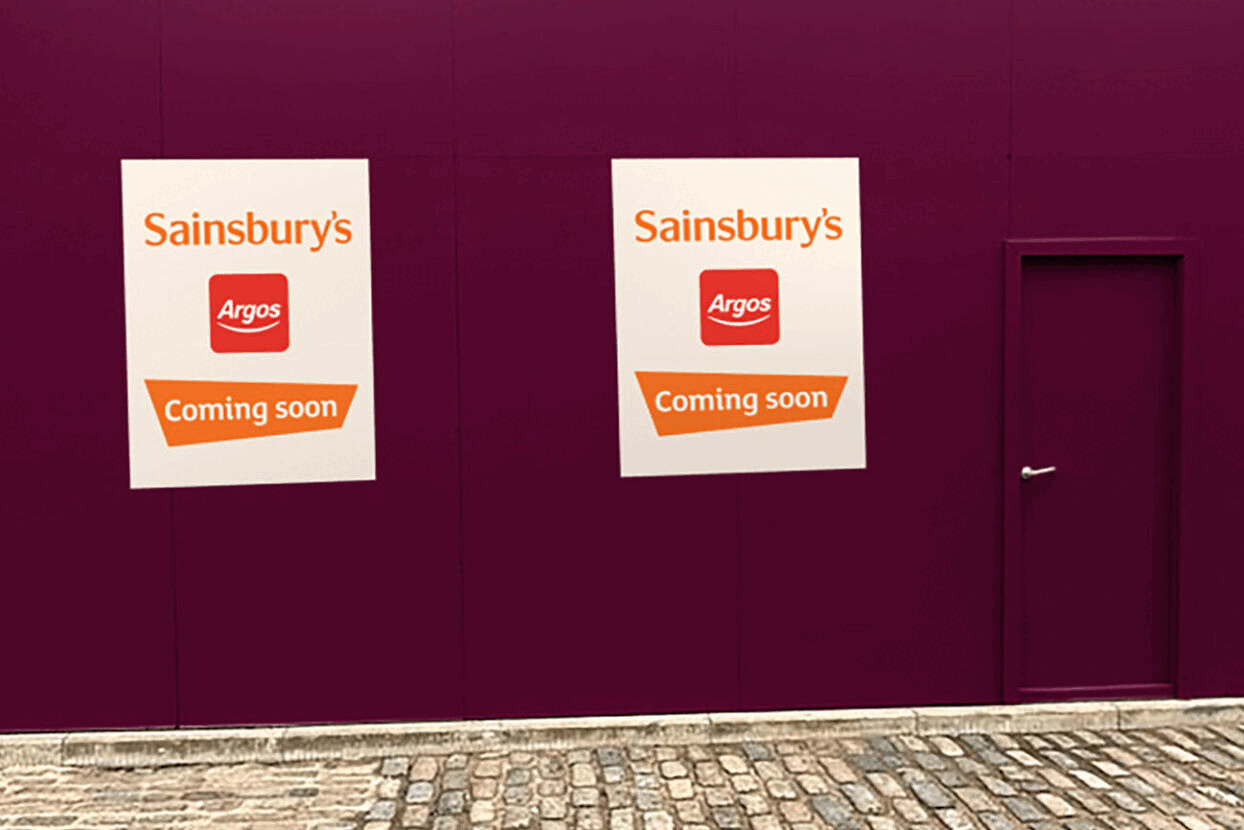Eye-tracking study confirms that high-impact formats outperform standard display
- Wednesday, May 4th, 2022
- Share this article:
High-impact digital advertising formats capture and retain user attention far more effectively than their standard counterparts, according to new research from ad tech company Adnami and attention technology specialist Lumen Research.
The joint study, which leveraged a fully consented eye-tracking panel to measure the impact on attention and brand lift of high-impact versus standard display advertising, shows that high-impact formats outperform standard formats by almost any possible metric.
Among the findings:
- On average, and across the board, high-impact Adnami formats are typically viewed for between as long as virtually any other ad unit
- Attention – which is far greater for Adnami formats than for standard display units – is directly linked to prompted and unprompted brand recall
- Topscroll, the best-performing Adnami ad unit, is viewed for 7x longer than the average standard display unit on desktop and more than twice the average display unit on mobile
- Adnami Skins and Midscrolls deliver 10x more attention than a 320×250 banner, according to Lumen’s benchmark data
- Creative plays a pivotal role in maximising the effectiveness of campaigns; with bold, simple messages proven to hit the hardest
The study, conducted in the UK and Nordic markets, used Lumen’s eye-tracking-based attention measurement metrics to measure the attention driven by Adnami formats versus standard display. Also under the microscope were the impact of attention on brand recall and the potential drivers of attention, including size, placement, creative and format.
“This study shows that format makes a huge difference when it comes to driving attention – perhaps even more than creative itself,” said Adnami CEO, Simon Kvist Gaulshøj. “ industry is still getting used to working with the new metric of attention. Here we have yet more proof of how important attention is to the planning, buying and measurement of media, and how high-impact formats are crucial in gaining it.”
High-impact superior when it comes to driving attention
High-impact and standard formats are clearly differentiated by the amount of time they are looked at by an average user (defined as attention), the study shows. When campaign delivery is understood through the lens of attention, it becomes clear that high-impact formats such as scrollers and skins significantly outperform standard display.
The best performing format was the desktop Topscroll, delivering on average 5,476 seconds of attention per 1,000 impressions delivered. Some results even showed results up to 72x higher than the standard display format.
Meanwhile, Skins delivered 2,181 seconds of attention per 1,000 impressions, or 10x more attention than a 320×250 banner, according to Lumen’s benchmark data. And, when compared to Lumen’s normative benchmarks, desktop Midscrolls delivered 10.6x more attention compared to a 320×250 banner.
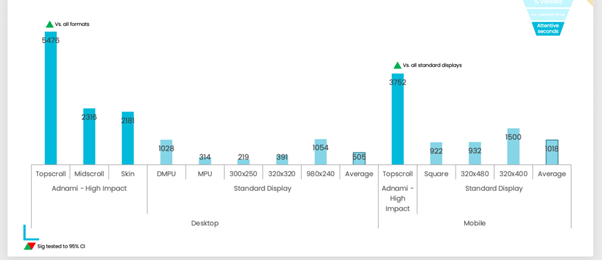 The study also found that high-impact formats hold a significantly higher potential to capture and retain user attention compared to other advertising formats.
The study also found that high-impact formats hold a significantly higher potential to capture and retain user attention compared to other advertising formats.
The Topscroll ads are viewed for 7x longer than the average standard desktop display unit and more than twice the average mobile display unit, while all Adnami formats are viewed for between approximately two and four times as long as any other ad unit on average.
What’s more, based on Lumens own attention metric, Topscroll outperforms all other formats by a factor of five on desktop and by between two and four on mobile. And that attention, in turn, is directly linked to brand recall, which keeps rising the more attention an ad receives.
Attention is directly link to brand outcomes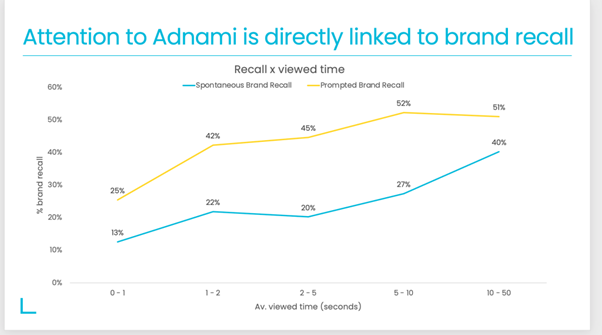 Adnami’s Simon Kvist Gaulshøj continued: “As we continue on our journey to improve media technology, we were delighted to partner with Lumen Research to put our high-impact formats to the test. Attention has not yet been embraced as a standard metric within the platforms we use to measure quality of media, but that moment is coming fast, and research like this helps to explain why.”
Adnami’s Simon Kvist Gaulshøj continued: “As we continue on our journey to improve media technology, we were delighted to partner with Lumen Research to put our high-impact formats to the test. Attention has not yet been embraced as a standard metric within the platforms we use to measure quality of media, but that moment is coming fast, and research like this helps to explain why.”
Format and creative are the main drivers of attention
The study also underscores the fact that, when the choice of format is in place, the creative plays a pivotal role in planning, reporting and optimising for attention on live campaigns. It proves that ads which demand attention keep it simple, and part of this is limiting the number of so-called ‘visual clusters’.
Indeed, four visual clusters is the maximum number the brain can easily process, finds the study, so it’s important for advertisers to try not to exceed this number. Individuals are less likely to recall a brand if overloaded, while emotional engagement is also reduced if there is too much clutter.
Mike Follett, Managing Director of Lumen explained: “Advertisers often say that they are in the business of buying ‘eyeballs’. This is why we use eye-tracking technology: To help brands measure, buy and amplify genuine attention to their marketing efforts.
“But it’s also critical to consider how people are viewing content alongside an ad, and to align the format with the content, to ensure maximum engagement. The findings of this study emphasise the importance of high-impact formats and the need to design ads which are clear and uncluttered.”
